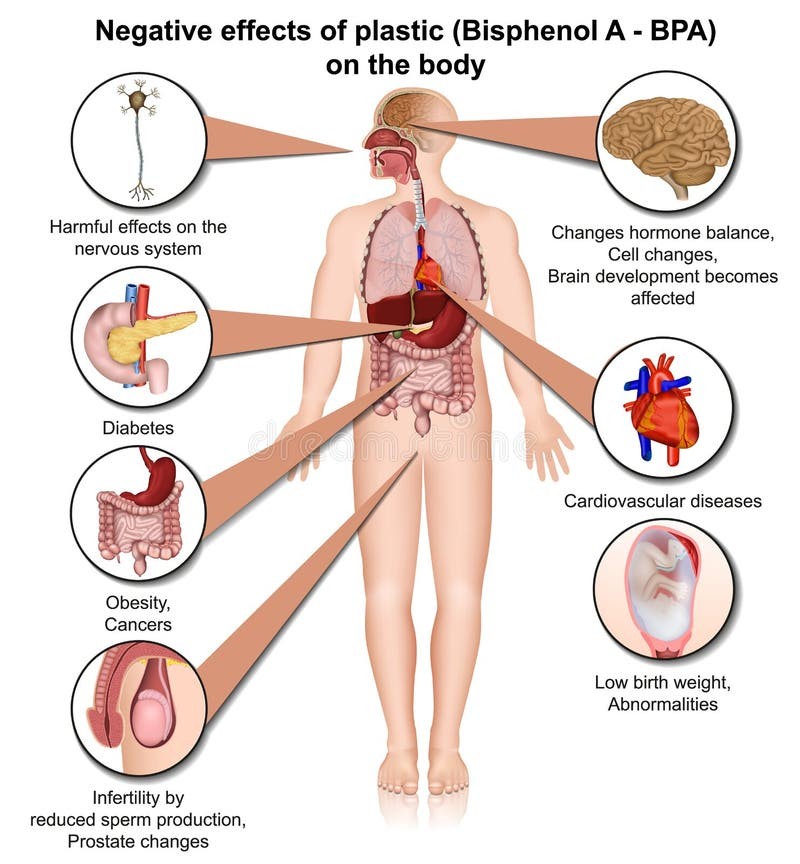
Contents
Symptoms of BPA Poisoning
BPA is an industrial chemical used to manufacture polycarbonate plastics and resins. The effects of BPA poisoning include birth defects, neurological issues, cancer, and other problems.
BPA, an industrial chemical used in the production of polycarbonate plastics and resins, poses potential health risks. Learn more about the sources and dangers of BPA and how to avoid it in your daily life.
BPA is commonly used in the manufacturing of polycarbonate plastics and resins. These plastics are then used to make food and beverage containers, such as water bottles, and even menstrual products. BPA-containing epoxy resins are applied as a coating inside metal products like food and drink cans and water pipes.
For over 50 years, BPA has been used to harden plastics for commercial products. Due to its widespread use, the National Institute of Environmental Health Sciences (NIEHS) has expressed concern about the levels of BPA exposure in our daily lives.
Sources of BPA
While BPA exposure can occur through air, dust, and water, the primary route of exposure is through diet, according to the NIEHS.
In the 1960s, BPA began being used in food packaging and kitchen products for their toughness, resilience, and durability. This raised concerns about BPA seeping into commonly consumed foods and drinks, especially those stored for extended periods, such as canned foods.
Plastic containers that are heated or microwaved can cause additional BPA to leach out due to heat exposure. Some common sources of BPA include:
- Plastic food containers and drinking cups
- Metal cans for storing canned goods
- Feminine hygiene products
- Toiletries
- Sealants used by dentists
- Eyeglass lenses
- Common electronics
- DVDs and CDs
- Sporting gear
Effects of BPA on the Body
Given its widespread use in household products, BPA exposure is inevitable. The U.S. Food and Drug Administration (FDA) considers BPA exposure levels below 2.25 milligrams per pound of body weight or 5 milligrams per kilogram acceptable.
BPA exposure, even at seemingly safe levels, has been linked to health problems. Acting like the hormone estrogen, BPA can bind to its receptors, affecting bodily functions such as cell growth, repair, energy levels, and reproduction. BPA can also bind to thyroid hormone receptors and influence cell function.
As a result, BPA exposure has been associated with the following diseases:
1. Birth defects and poor childhood health
BPA can seep into the placenta and breast milk, affecting fetal growth and increasing the risk of disease through gene expression.
2. Neurological issues in children
BPA has been linked to poor brain development and behavioral problems in children, leading to anxiety, depression, and conditions like attention deficit hyperactivity disorder.
3. Cancer
BPA exposure has been linked to the development of various cancers, including colon, prostate, breast, and ovarian cancer. It may also decrease the effectiveness of chemotherapy, according to lab studies.
BPA exposure stresses the body, enhancing its inflammatory effects and increasing the risk of heart disease.
5. Infertility
In animal studies, BPA negatively impacted male fertility, decreasing testosterone levels and affecting sperm quality. It also increased infertility in female mice by lowering estradiol, affecting egg quality and implantation.
BPA’s binding to estrogen receptors in the body can lead to fat accumulation, weight gain, and damage to mitochondria, causing chronic stress and a compromised immune response. This affects appetite regulation and increases the risk of type 2 diabetes.
Minimizing BPA Contact
To limit BPA exposure, consider the following lifestyle changes:
- Choose BPA-free packaging and products. Check food packaging carefully and avoid old, scratched, or unlabeled products. Avoid foods packaged in containers with recycling codes 3 or 7 (often marked with a triangle at the bottom).
- Avoid heating plastic food containers. Microwaving plastic increases the risk of BPA leaching into food. Use microwave-safe utensils to cook.
- Prefer glass bottles. Select drinks that come in glass bottles and use glass water bottles and baby bottles.
- Avoid frozen or canned goods. Opt for whole and fresh fruits and vegetables.
- Choose BPA-free toys and toiletries. Ensure toys and toiletries are BPA-free, especially those children might chew or suck on or that come into contact with the mouth.
Research on BPA-free plastic alternatives is ongoing. However, these products may still contain bisphenol-S or bisphenol-F, which can disrupt cell function similarly to BPA. For now, minimizing the use of all plastics and opting for glass, stainless steel containers, and biodegradable packaging may be the best solution.
Conclusion
While it may be challenging to completely avoid BPA exposure in our modern lifestyle, limiting contact with BPA is attainable. Choosing whole foods, avoiding processed or canned foods and drinks, and opting for glass or stainless steel kitchenware are some practical choices.
Sources:
1. Birth Defects Research: "Plastics derived endocrine-disrupting compounds and their effects on early development."
2. Chemosphere: "Chronic exposure to BPA impairs male germ cell proliferation and induces lower sperm quality in male mice."
3. Columbia Center for Children’s Environmental Health: "Bisphenol-A (BPA)."
4. Critical Reviews in Toxicology: "Bisphenol A co-exposure effects: a key factor in understanding BPA’s complex mechanism and health outcomes."
5. Current Molecular Pharmacology: "The Endocrine Disruptor Bisphenol A (BPA) Exerts a Wide Range of Effects in Carcinogenesis and Response to Therapy."
6. Endocrinology and Metabolism (Seoul, Korea): "Bisphenols and Thyroid Hormone."
7. Environmental Health Perspectives: "Bisphenol S and F: A Systematic Review and Comparison of the Hormonal Activity of Bisphenol A Substitutes."
8. International Journal of Molecular Sciences: "Potential Mechanisms of Bisphenol A (BPA) Contributing to Human Disease."
9. Journal of Environmental Health: "Bisphenol A: a threat to human health?"
10. Journal of Environmental Science and Health. Part. B, Pesticides, Food Contaminants, and Agricultural Wastes: "Bisphenol A and Bisphenol S release in milk under household conditions from baby bottles marketed in Italy."
11. Molecular and Cellular Endocrinology: "Environmental estrogen-like endocrine disrupting chemicals and breast cancer."
12. National Institute of Environmental Health Sciences: "Bisphenol A (BPA)."
13. Oxidative Medicine and Cellular Longevity: "Role of Antioxidants and Natural Products in Inflammation."
14. Reproductive Biology and Endocrinology: "Bisphenol A: an emerging threat to female fertility."
15. Roczniki Panstwowego Zakladu Higieny: "Health risk of exposure to Bisphenol A (BPA)."
16. U.S. Food and Drug Administration: "2014 Updated safety assessment of Bisphenol A (BPA) for use in food contact applications," "Bisphenol A (BPA): Use in Food Contact Application."


